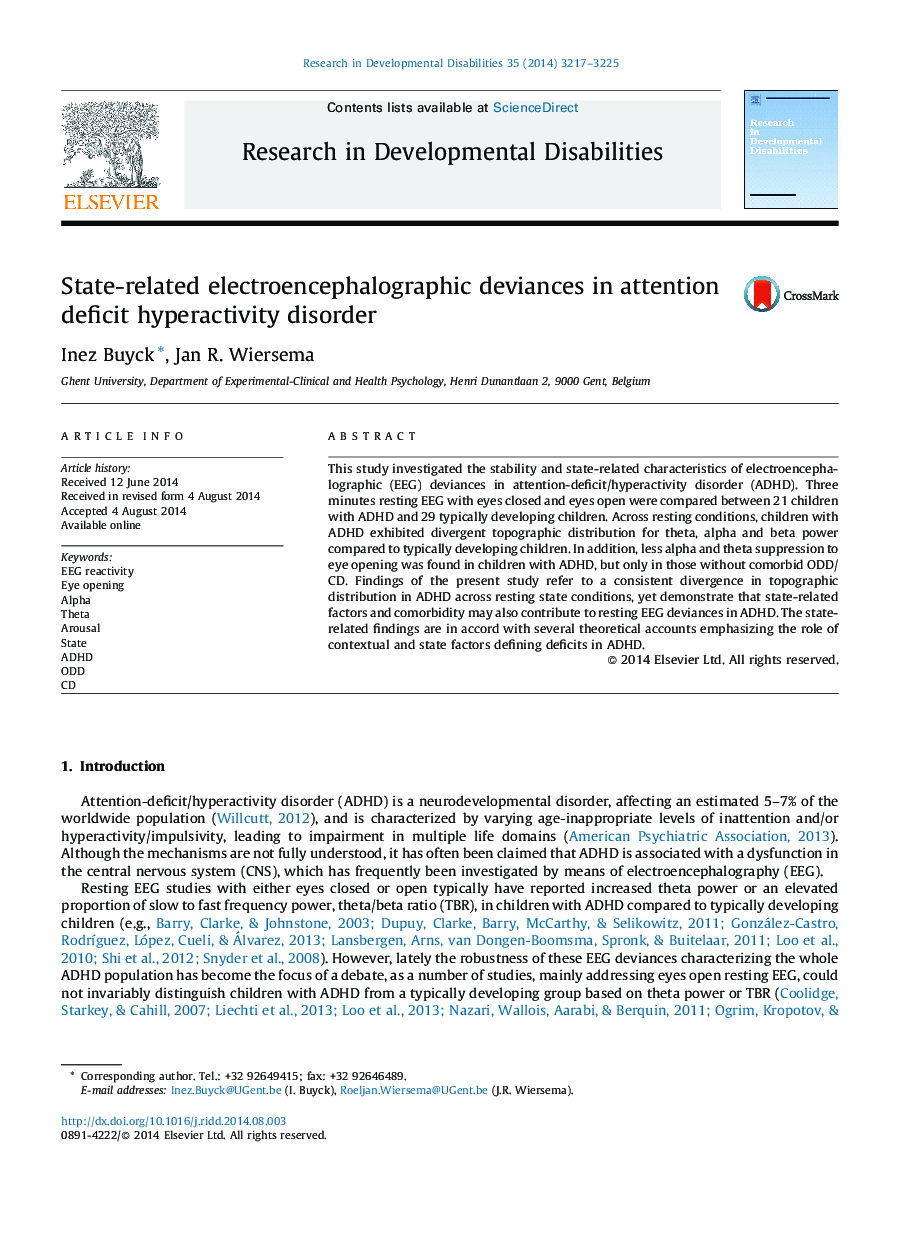| Article ID | Journal | Published Year | Pages | File Type |
|---|---|---|---|---|
| 10317418 | Research in Developmental Disabilities | 2014 | 9 Pages |
Abstract
This study investigated the stability and state-related characteristics of electroencephalographic (EEG) deviances in attention-deficit/hyperactivity disorder (ADHD). Three minutes resting EEG with eyes closed and eyes open were compared between 21 children with ADHD and 29 typically developing children. Across resting conditions, children with ADHD exhibited divergent topographic distribution for theta, alpha and beta power compared to typically developing children. In addition, less alpha and theta suppression to eye opening was found in children with ADHD, but only in those without comorbid ODD/CD. Findings of the present study refer to a consistent divergence in topographic distribution in ADHD across resting state conditions, yet demonstrate that state-related factors and comorbidity may also contribute to resting EEG deviances in ADHD. The state-related findings are in accord with several theoretical accounts emphasizing the role of contextual and state factors defining deficits in ADHD.
Related Topics
Life Sciences
Neuroscience
Behavioral Neuroscience
Authors
Inez Buyck, Jan R. Wiersema,
